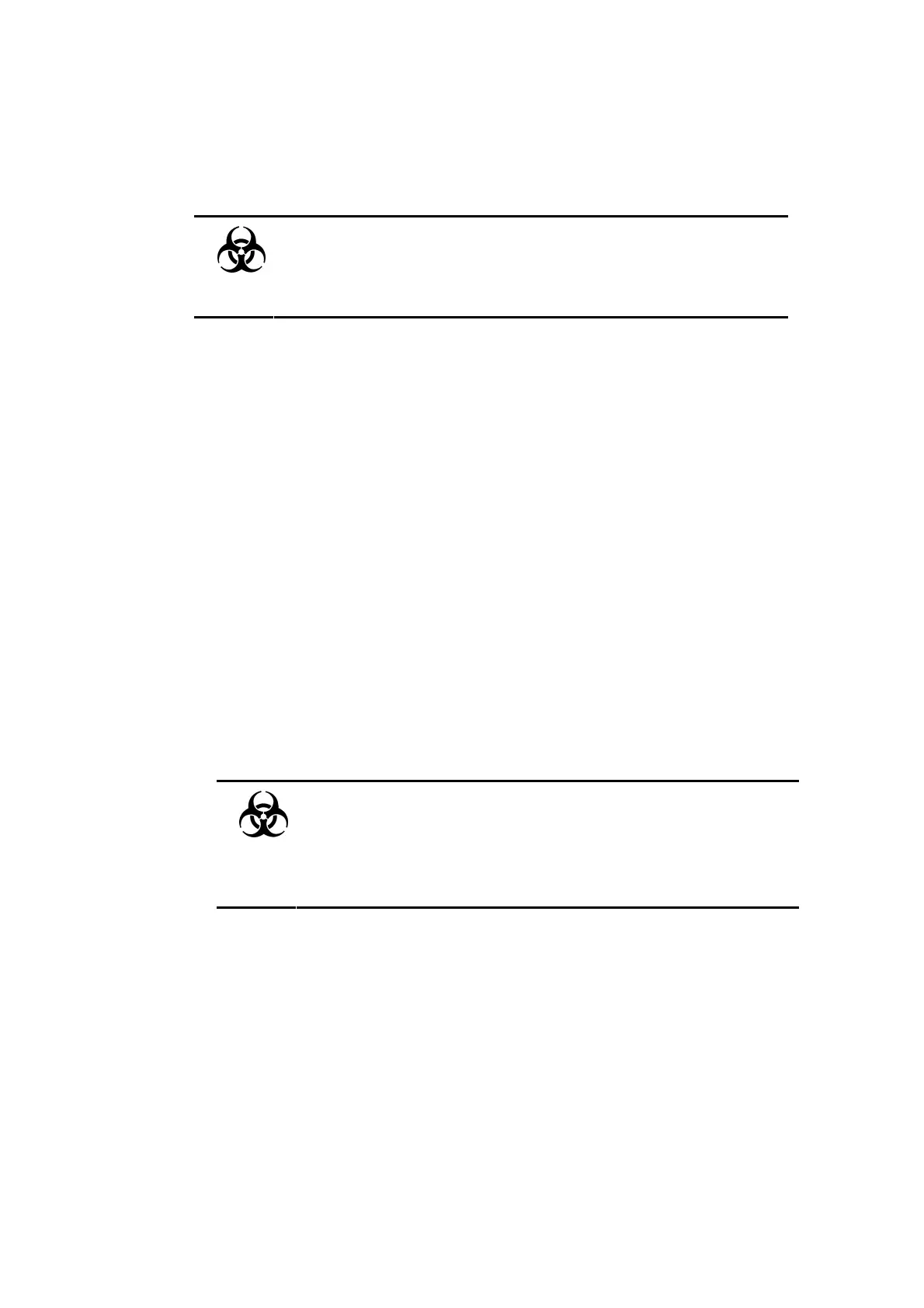7-4 7 Service and Maitenance
1. Check how much space left in the waster tank before the test. If enough,
proceed to the 5th step. If not enough, proceed to the next step.
2. Unscrew (counter-clockwise) the tank cap and remove the cap together with
the pickup tube and the sensor.
BIOHAZARD
After removing the cap of the waste tank (together with the tube
and sensor), place it on an appropriate place to avoid biohazard
contamination.
3. Empty the waste tank.
4. Screw (clockwise) the cap (together with the waste tube and the sensor) back
onto the tank until secure.
5. Ensure the deionized water pickup tube is not blocked, bent, or twisted.
7.2.3 Checking Connection of Deionized Water
1. Check the connections between the two connectors marked DEIONIZED
WATER on the analyzing unit and their counterparts. If you see leaks, wipe
off the water with clean gauze and tighten the connections and proceed to the
next step.
2. Check whether the cap of the deionized water tank is loose.
3. Ensure the waster pickup tube is not blocked, bent, or twisted.
4. Check whether the sensor of the deionzed water is well connected.
7.2.4 Checking Connection of Waste Water
BIOHAZARD
In case your skin contacts the sample, control or calibrator, follow
laboratory safety procedure and consult a doctor.
Dispose of the used gauze in accordance with your local or
national guidelines for biohazard waste disposal.
1. Check the connections between the connector marked WASTE on the
analyzing unit and its counterpart. If you see leaks, wipe off the waste with
clean gauze and tighten the connections and proceed to the next step.
2. Check whether the cap of the waste tank is loose.
3. Ensure the waste pickup tube is not blocked, bent, or twisted.
4. Check whether the sensor of the waste is well connected.
7.2.5 Checking Syringe
1. Place the Power to OFF.

